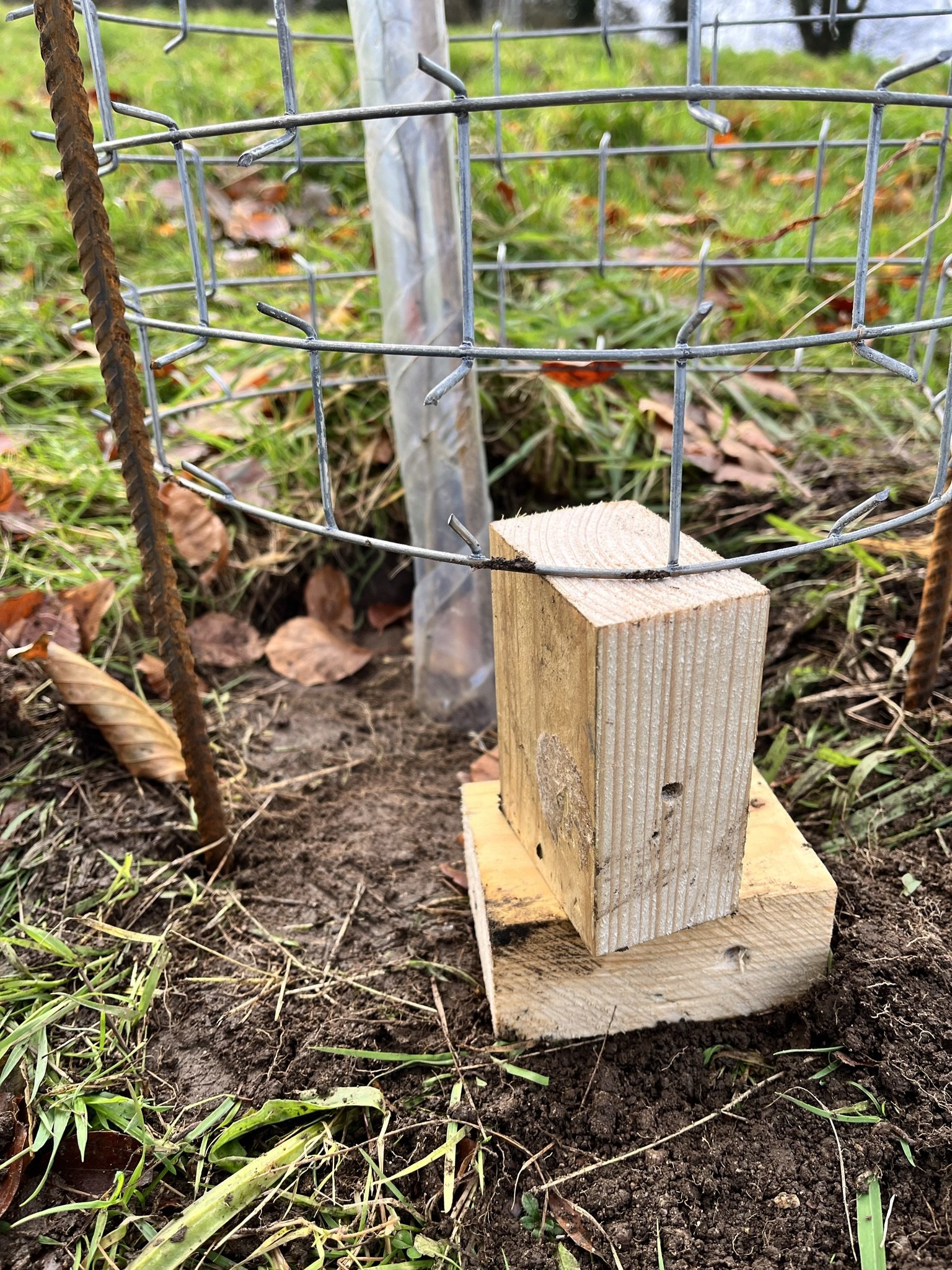How long does it take to plant 24 trees? The answer is if you have eight friendly people it only takes three hours, with a good half-hour break included for coffee and substantial snacks.
One Saturday in early December I spent an enjoyable morning planting native trees on a steeply sloping field, just to the south of Chagford on the lower skirts of Nattadon Hill. Frances bought the field a few years ago and she has carefully planned a program of tree and hedge planting. Digging holes, adding some mycorrhizal powder, and then firming in the bare root young trees is not the time-consuming part of the work. Essential for the survival of these trees on the edge of Dartmoor is protecting them from deer, moorland ponies and cattle. This is where ‘cactus guards’ are valuable, but they need to be carefully lowered over each sapling. Tim Nicholson is the inventor, owner and supplier (cactustreeguards.co.uk). The cactus guards are kept in position using three metal stakes (rebars), which are driven into the ground but then 'tied’ to the cactus guards using metal ties.
Ideally a gap of around 4-6 inches should be left at the bottom of the cactus guards to allow for weeding around the young trees. A space large enough for a hand. Following helpful advice from Mark Owen at Challacombe farm on Dartmoor, we used wooden blocks to help us position the cactus guard the right distance above the ground. The great thing about these cactus guards is that it means farmers can plant trees in fields used by livestock, but it does mean that each guard needs to be held in place solidly by the rebars
Tree planting does not feel like work when you cooperate as a team - two people per cactus guard. The views were an additional bonus - rolling fields lit by the thin winter sun, across the Teign valley to Castle Drogo beyond. Using unfamiliar tools, such as a special electric screwdriver attachment that twizzles the wire fasteners together, was a great learning experience. By the end of the morning, I felt inspired and motivated to do more tree planting on our own land on the banks of the Teign.
Frances bought the trees from Ashridge Nursery: a mixture of little leaf limes, oak, beech, silver birch, hornbeam, rowan, blackthorn and hawthorn. These trees were chosen partly because they have some resistance to drought. This is becoming more and more of a problem here and particularly on the slopes where all the rainfall (and nutrients) drain off quickly. Frances has also learned a lot from last year’s planting, and finding out which species really struggle in dry weather and don’t thrive in the local soil, which is quite acidic. The Dartmoor National Park have helped to support Frances’ tree and hedge planting project with a Farming in Protected Landscapes (FIPL) grant.


